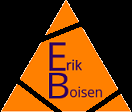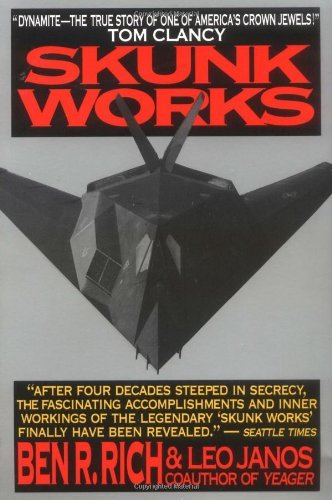
A peek into Lockheed’s top secret development department that brought the U2 spy plane, the SR-71 , and stealth technology to life.
I am an engineer, so of course the technical aspects of the book are what drew me into it, but I found myself more interested in the comical workings of the government, particularly the CIA, in these engineering endeavors. Both the U2 and the SR-71 were projects, at least initially, taken up for the CIA. The U2 spy plane was built to fly above the Soviet Union, undetected at 70,000 feet, and take pictures of any nuclear or military activity within the Soviet borders. This project started in the 1950’s. The CIA did not, and presumably does not currently, get funding that is acquired through typical, shall we say, legitimate channels for their little “projects”.
To fund the U2, the CIA created a bogus corporation that would send checks to the Skunk Works’ head, Kelly Johnson’s, home address. Parts to build the plane were ordered through bogus companies and were sent to an empty building serving as the fake company’s headquarters. The said parts were then transported to Lockheed. Some of the checks, in 1950’s money, were in the neighborhood of $1,000,000. Who knows where this money came from? The operation was so shady that suspicious postal inspectors sent someone to follow the vehicles leaving the fictitious company’s headquarters to bring parts to Lockheed. The postal inspectors quickly found themselves on the wrong side of a CIA interrogation once they arrived at Lockheed.
With the U2 finally built and tested, pilots were needed to fly it over Russia. The CIA tried to use Turkish nationals as they felt it would look bad if an American pilot were shot down inside of Russia. This plan did not go well. The U2 was extremely difficult to land and fly. It had just two tandem wheels, like a bicycle, and extremely long wings that would often slap the runway upon landing. It was meant to fly at 70,000 feet, a feature that, at the time, could only be accomplished by keeping the weight very low. This meant only one seat, so training, which is normally done with an experienced pilot flying with his student, was impossible. The CIA then decided to use Air Force pilots. But they couldn’t be Air Force pilots. They had to resign their commissions and join Lockheed under assumed names with their pay coming from the CIA through checks from bogus companies. Here is a view of a pilot inside a U2 at altitude:
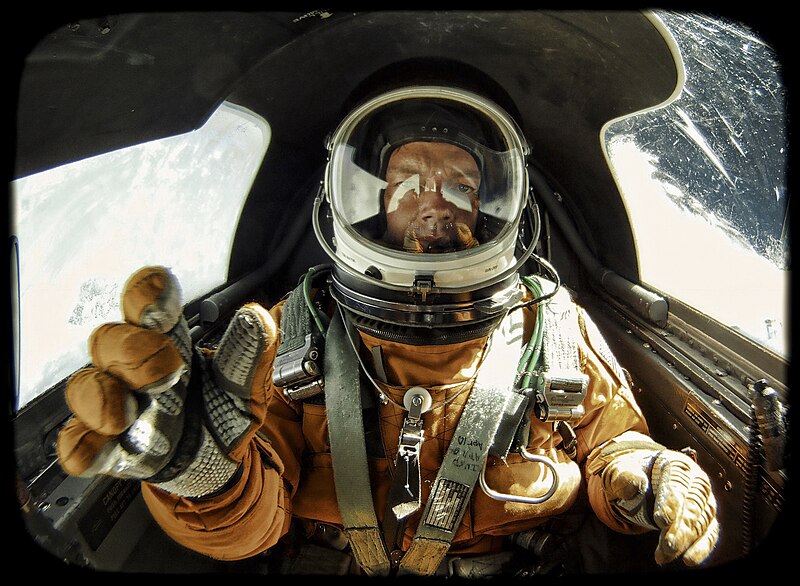
The U2 was largely successful in that it could fly over Russia, almost at will, without being shot down. Unfortunately, Russian radar was far better than predicted and, although it could not be shot down, the U2 could be tracked by Russian radar from almost the moment it took off to the moment it landed. The plane was built to fly at 70,000 feet as Russian fighter planes and missiles were assumed to not be able to approach this height. This proved true. U2 pilots frequently saw Russian fighters scrambling towards it, but they could do nothing more than fly in formations 15,000 feet below, to partially block the U2’s view. It was also thought that Russian radar could not be effective at this height. This proved to be untrue. This was the height of the cold war and US-Russia relations were tense. Having a spy plane that Russia knew was flying over, but could do nothing about did not help relations. The US also knew that the Russians would eventually be able to shoot down something they can easily track.
This gave way to the CIA’s next spy plane-the SR-71 Blackbird. This plane was designed to fly at 90,000 feet at a blistering Mach 3. A plane at this speed will get surface temperatures exceeding 800° F just from the air moving over its surface at such a high speed. Standard plane-building materials such as aluminum were out of the question for this application. Titanium was settled upon. Oddly, the only place capable of supplying enough titanium to build this plane in 1960 was Russia. Bogus corporations were set up to buy titanium from Russia so that the SR-71 could be built to spy on Russia. You couldn’t make this stuff up if you wanted to. Titanium was very strong and brittle compared to most materials. Lockheed had to figure out ways to machine it as standard machining tools and processes of the time did not work on this metal. Titanium also reacted to other metals and chemicals in ways that typical aircraft materials did not. Eventually, Lockheed figured out how to make a a plane almost entirely out of titanium. This was the result:
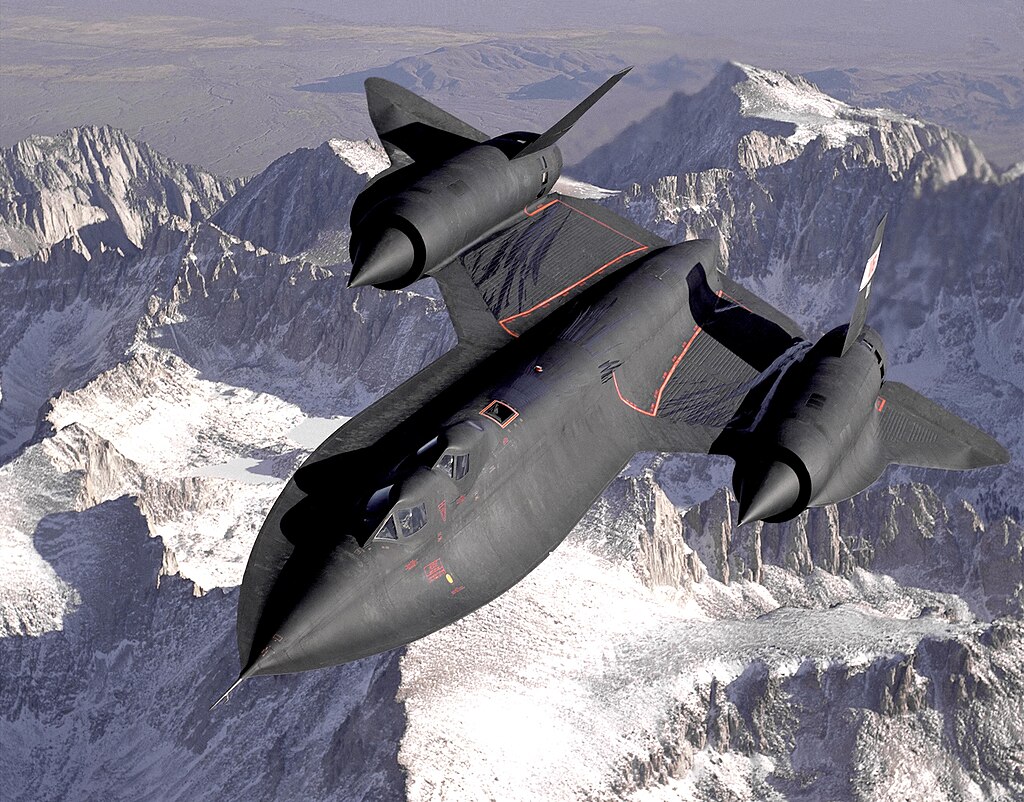
Pretty crazy looking for 1964? It still looks futuristic. It could fly from New York to Los Angeles in less than an hour. It might still be the fastest plane ever built. It actually was capable of exceeding Mach 3, and has gone as fast as Mach 3.5 (2685 mph) with a ceiling of 86,000 ft. It could cruise at Mach 3. Known planes that can hit speeds above Mach 2, can only do so for short periods of time. This was truly a ridiculous feat of engineering during a time when the fastest computer of the era wasn’t capable of running the simplest app of a modern cell phone.
It’s interesting to note that the SR-71 was originally referred to as the RS-71 from inception and for several years after, until president Lyndon Johnson misspoke when announcing the existence of the plane to the public in a speech. He mistakenly referred to the aircraft as the SR-71, so rather than issue a correction to his speech, Lockheed was forced to change tens of thousands of pages of documentation and drawings to refer to the plane as the SR-71, rather than the originally intended RS-71. Given the timeframe, the mid 1960’s, these were tens of thousands of all hand-drafted drawings and typed documents that each had to be duplicated, by hand, at great time and expense, to reflect the president’s accidental mis-naming.
Of course the CIA could not stop with the SR-71. They needed a plane invisible to radar. Enter stealth technology. Ironically, again, as with the titanium supplied unknowingly by Russia for the SR-71, stealth technology was also largely borne from Russia. A Lockheed engineer, Denys Overholser, stumbled upon the works of a Russian Physicist named Pyotr Yakovlevich Ufimtsev. Pyotr had come up with the math necessary to design and compute the radar profiles of objects. Pyotr’s work was overlooked by the Russians, but Lockheed recognized its potential value and began building prototypes based off of designs dictated by the Russian physicist’s formulas. They proved very viable as the Lockheed prototypes were dozens of orders of magnitude better than any other military contractor’s stealth offerings. A full-sized bomber could have the radar signature of a ball bearing. One of the most difficult aspects of the Stealth bomber’s design was disguising the pilot’s round head in the cockpit from radar. Round shapes are picked up well by radar. Here is the familiar outline of the well-known shape of the F-117. Notice there is nothing round on it:
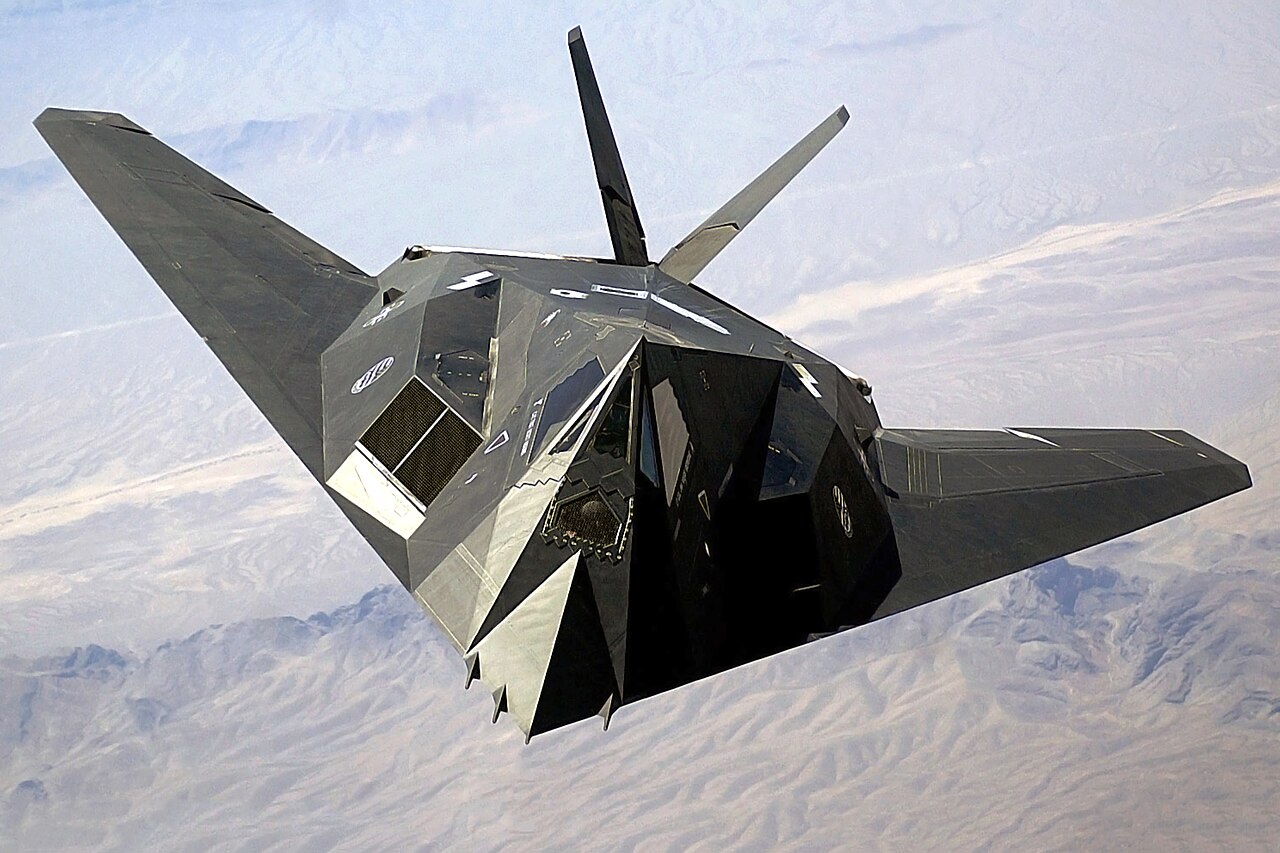
The odd design scatters radar, but makes for a rather uncontrollable design from an aeronautics perspective. Everything in the plane is fly-by-wire, with computers adjusting every aspect of the controls to keep the plane airborne. It saw its first use in the Iraq war as it sent laser-guided bombs to targets with great precision in the dead of night. After a week of non-stop bombing, Iraq had almost no remaining air defenses with none of the F-117’s being shot down as they remained invisible on the Iraqi defense’s radar screens. The plane proved a great success for over 25 years. It makes you wonder what is being cooked-up to replace it?

